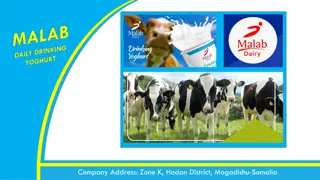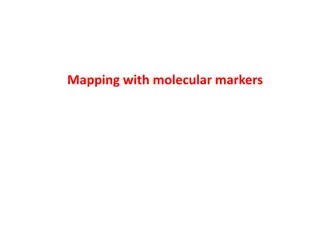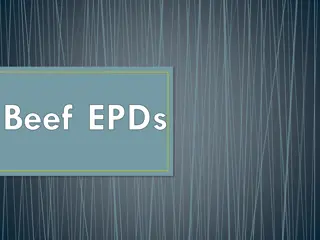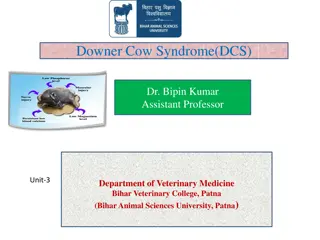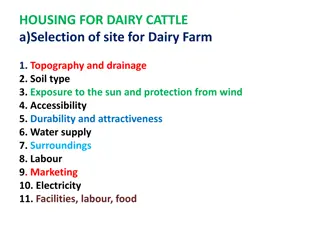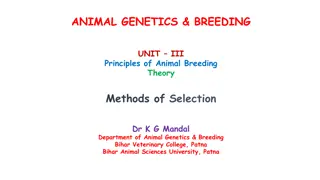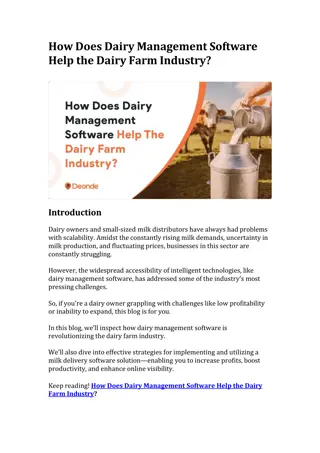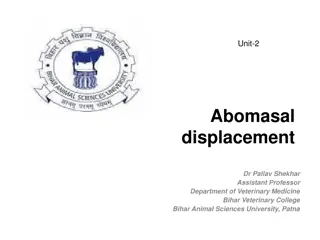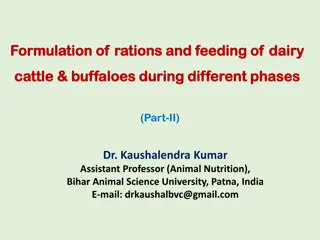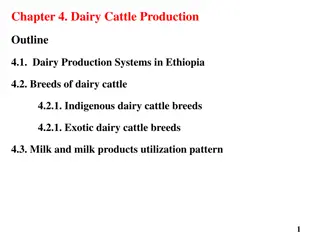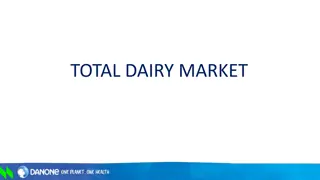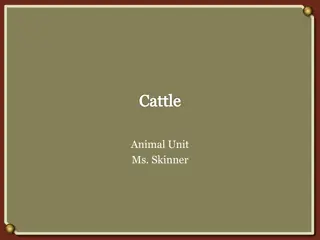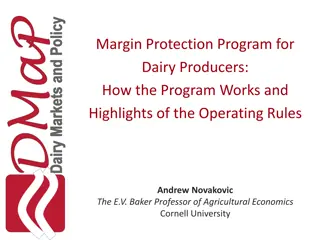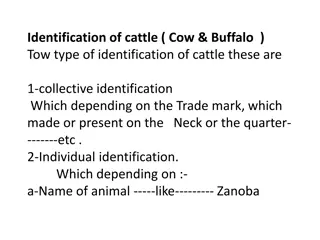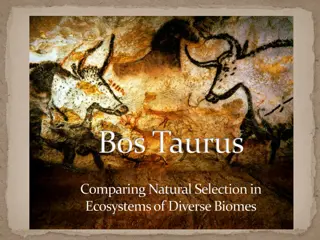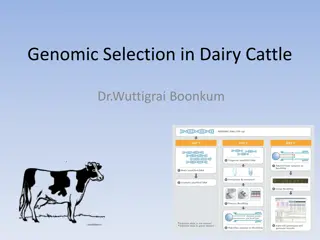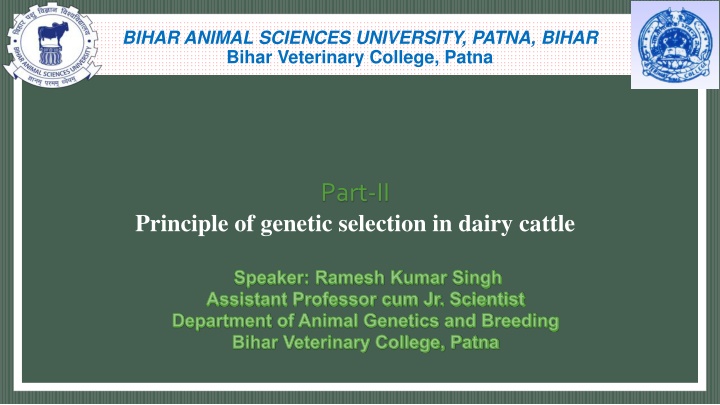
Genetic Selection in Dairy Cattle at Bihar Animal Sciences University
Explore the principles of genetic selection in dairy cattle with Assistant Professor Ramesh Kumar Singh at Bihar Veterinary College, Patna. Learn how genetic variation plays a key role in improving traits and genetic progress. Discover the importance of heritability in predicting genetic value and enhancing traits in cattle breeding programs.
Download Presentation

Please find below an Image/Link to download the presentation.
The content on the website is provided AS IS for your information and personal use only. It may not be sold, licensed, or shared on other websites without obtaining consent from the author. If you encounter any issues during the download, it is possible that the publisher has removed the file from their server.
You are allowed to download the files provided on this website for personal or commercial use, subject to the condition that they are used lawfully. All files are the property of their respective owners.
The content on the website is provided AS IS for your information and personal use only. It may not be sold, licensed, or shared on other websites without obtaining consent from the author.
E N D
Presentation Transcript
BIHAR ANIMAL SCIENCES UNIVERSITY, PATNA, BIHAR Bihar Veterinary College, Patna Part-II Principle of genetic selection in dairy cattle Speaker: Ramesh Kumar Singh Assistant Professor cum Jr. Scientist Department of Animal Genetics and Breeding Bihar Veterinary College, Patna
From the definition of the phenotype: P = G + E, we can see that there are two possible ways to improve trait: By improving the genotype through genetic selection. For example, the variation between cows for milk yield (some cows produce more milk than other), if results from genetic variation (which means that these cows will always produce more milk no matter the environment), allows genetic improvement. By improving the environment through herd management. Genetic variation is, therefore, the first component to genetic progress.
Genetic variation = component 1 to genetic Genetic variation = component 1 to genetic progress progress The distribution of genetic value for a population follow distribution: The usual measure of variation is the variance which deviation of individual deviation of individual records from their population average. The variation that is caused by genetic differences among individuals is called the genetic variance. a normal is the standard squared
Heritability Heritability If we go back to the formula: P = G + E, with variance properties, we can write: Var (P) = Var (G) + Var (E) Which is equivalent to: Var (P) = Var (A) + Var (D) + Var (E) + Var (e)
Finally, the expected results, in the offspring, for these 2 independent loci are: Finally, the expected results, in the offspring, for these 2 independent loci are:
A large heritability (0.5 or greater) suggests that a record on an individual is a good indicator of that individual's genetic value Traits with high heritability are easy to improve. A small heritability (0.15 or less) suggests that one record has some meaning in estimating genetic value, yet much is unknown about individual's true genetic value A progeny test and pedigree analysis will help in predicting genetic value.
The table below gives values for heritability and genetic variance in the French Holstein breed for some interesting traits: We just saw that genetic variation is crucial to genetic progress. The objective selection is to provide offspring which are superiors to their parents for interesting traits. Therefore, it is essential to rank and select animals based on their genetic value through genetic evaluation. Traits Heritability Genetic variance Milk yield (kg) 0.30 576.081 Fat (kg) 0.30 974 of genetic Protein (kg) 0.30 518 Fat content (g/kg) 0.50 8.82 Protein content (g/kg) 0.50 2.19 Somatic cell score 0.15 0.25 Conception rate for cows (%) 0.02 0.005 Interval calving to first service (days) 0.06 60
Genetic evaluation: Estimated breeding value Terms associated with genetic value:- Genetic value is the effect the genes of the animal have on its production. Breeding value has the same meaning except that it is more likely to be used to describe the effects of genes the animal can pass on to its progeny. Transmitted ability is often used as a substitute for one-half breeding value. Indeed, an animal can pass on only a sample one-half of its genes to its offspring.
True genetic value (TBV) is never known exactly, we cannot see genes and breeding values So we must use observed phenotypes to obtain estimated genetic value (EBV) and estimated transmitting ability (ETA). The most obvious piece of phenotypic information we can use is the animal's own phenotype. But we can also use information from relatives, such as the sire, the dam, siblings and progeny. Breeding values are estimated based on phenotypic differences between animals or more specifically, phenotypic deviation.
The principle of breeding value estimation is based on regression We want to know differences in breeding value based on observed differences in phenotype If we regress breeding values on phenotypic observations, the slope of the regression line tells us how much difference we have in breeding values per unit of difference in phenotype. Exercise :- In the figure below, which trait has the highest heritability, the one presented in graph 1 or in graph 2? Relationship between breeding value and phenotype, depending on heritability

